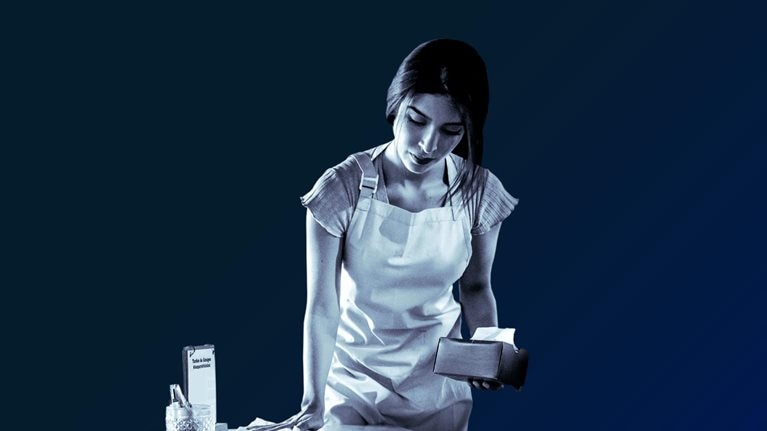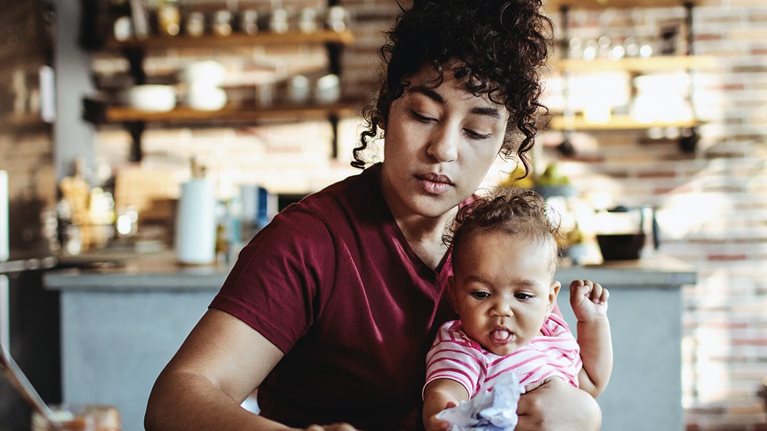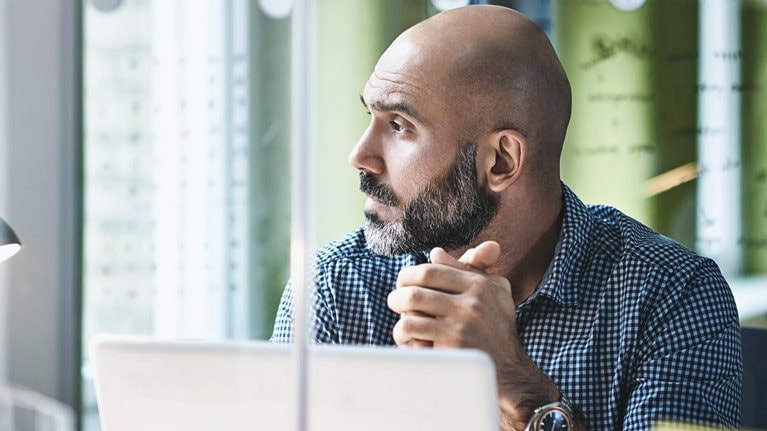Amid the rising deaths, infections, and possible economic implosion of the COVID-19 pandemic, our country’s most pressing need is to save lives and arrest any plunge into a prolonged recession or depression. The crisis is already hitting major social and economic systems, yet Black Americans will experience a disproportionate share of the disruption—from morbidity and mortality to unemployment and bankruptcy.
McKinsey analysis shows that Black Americans are almost twice as likely to live in the counties at highest risk of health and economic disruption, if or when the pandemic hits those counties.1 To assess disruption, we evaluated five indicators: underlying health conditions, poverty rate, number of hospital beds, percentage of people in severe housing conditions, and population density. This integrated health and economic perspective describes which counties are likely to take a “one-two punch” due to the pandemic and could get trapped in a vicious cycle of economic instability and poor health.
In addition, we found that 39 percent of all jobs held by Black Americans—compared with 34 percent held by white Americans—are now threatened by reductions in hours or pay, temporary furloughs, or permanent layoffs, totaling 7 million jobs.2
Indeed, the pandemic underscores the consequences of the structural disparities that have persisted in this country for centuries while presenting an opportunity to invest in building more equitable systems that will benefit society overall. In this article, we outline some of the key findings from our report on COVID-19 and Black America.
Places at highest risk
Because the situation continues to evolve, projections are necessarily, at best, probabilistic. Even so, our analysis suggests that Black Americans are 1.4–1.8 times as likely to live in counties at highest risk of disruption from the pandemic (exhibit). Thirty percent of the country’s population lives in these high-risk counties, compared with 43 percent (17.6 million) of Black Americans. The counties in the highest-risk decile are home to only 10 percent of the US population as a whole—but to 18 percent of the Black population.

Risks to health and lives
Nationally, Black Americans are not only more likely to be at higher risk for contracting COVID-19 but also have lower access to testing. In addition, they are likely to experience more severe complications from the infection; black Americans are on average about 30 percent likelier to have health conditions that exacerbate the effects of COVID-19.3
Unfortunately, Black Americans are overrepresented in nine of the ten lowest-paid, high-contact essential services, which elevates their risk of contracting the virus. Thirty-three percent of nursing assistants, 39 percent of orderlies, and 39 percent of psychiatric aides,4 are Black. Black workers are putting their lives and health on the line to provide goods and services that matter to our society.
Although little testing data are available, as of April 4, ten of the 16 states where 65 percent of Black Americans live were below the median testing rate for the country as a whole.5 Black Americans were already twice as likely as their white peers to die from diabetes, hypertension, and asthma—all risk factors that exacerbate COVID-19 symptoms.6 Even Black Americans who do not need care for COVID-19 are likelier than white Americans to suffer from the pandemic’s secondary effects on our overloaded medical system, including delayed—but necessary—medical procedures.7
Risks to livelihoods and economic futures
As the impact of the pandemic moves from health to economic consequences, Black Americans will likely sustain more damage across every stage of the wealth-building journey.8 Crucially, 39 percent of jobs held by Black workers (seven million jobs in all) are vulnerable as a result of the COVID-19 crisis compared with 34 percent for white workers.9 Forty percent of the revenues of Black-owned businesses are located in the five most vulnerable sectors—including leisure, hospitality, and retail—compared with 25 percent of the revenues of all US businesses.10 Forty-eight percent of Black survey respondents11 report regularly using food-assistance programs, compared with 31 percent of white respondents. Such services are likely to come under significant strain and interruptions as a result of the pandemic.12
Protective measures
There is an immediate opportunity to protect Black Americans and their communities from the worst effects of the COVID-19 crisis. These interventions should target the places where Black people live, work, and do business.
To identify and mitigate disparities, it will be critical to track the damage and the recovery from the pandemic along racial lines. Relevant information includes (but is not limited to) rates of infection, access to healthcare providers and testing, jobs lost, and small business loans allocated. In addition, stakeholders could also identify and patch gaps in services normally provided by the public education system and increase resources for the most affected students and families.
Training and deploying community health workers, which are common in places where the need for healthcare significantly outstrips supply, could increase access to health services.13 Community health workers help connect patients to both health and social services, build trust in healthcare systems, and reserve capacity for licensed healthcare workers to treat the most critical cases. Community and faith-based organizations can use their roles as hubs to organize the workers, share information about the virus, encourage preventive measures such as environmental and personal hygiene and physical distancing, and distribute personal protective equipment (PPE) and sanitary equipment to the homes of essential workers. These organizations can also provide targeted, wraparound support to people with high-risk comorbidities.
Stakeholders could deliberately support the most vulnerable workers, including Black Americans. Some employers are finding creative solutions that keep people employed, and this could be supplemented with job-matching and reskilling programs that can efficiently redeploy talent even during a macroeconomic contraction. Employers could also maintain a commitment to equity when they downsize. Support programs that provide direct and in-kind forms of liquidity (such as straightforward cash assistance, short-term extensions for financial obligations, and loan and interest forgiveness) could help sustain families in financial distress.
Community development financial institutions (CDFIs), churches, and nonprofits could help Black-owned businesses and residents to access recovery funds. Similarly, new financial products and programs such as community rainy-day funds could fortify the resilience of communities. Corporations could make a point to work with Black-owned businesses.
Recovery, rebuilding, and reimagination
COVID-19’s outsized impact on the Black community reflects public health and socioeconomic disparities that have long been intertwined. The pandemic is an opportunity to invest in addressing structural challenges to help Black Americans recover and to build and sustain more equitable communities.
Investments in public health, digital infrastructure, institutions of public education, and economic development planning should continue long after the COVID-19 pandemic subsides. In particular, stakeholders could consider setting national goals to improve health equity and create plans to meet those goals.
Support for Black homeowners and businesses could be a priority to ensure that Black families do not lose their assets and resources. That kind of support could include protection from bankruptcy, insolvency, and eviction, all of which will disproportionately affect Black Americans as part of the pandemic’s fallout. Institutions could also support equity in compensation and career progression. These types of assistance speak less to protection and more to providing the opportunities and stability required to help Black families build a resilient economic foundation.
The COVID-19 pandemic is already a generation-defining crisis. Because it affects all social systems, it heightens preexisting structural challenges that Black Americans face. But a trial can also be an opportunity. Our society can consider how we can respond to the COVID-19 crisis and fallout to fortify Black communities and help them do more than simply recover. We can use the urgency of the pandemic to build more equitable systems that increase the long-term resilience of Black Americans, communities, and institutions. As we progress toward this goal, the US economy could benefit to the tune of $1.5 trillion.14


